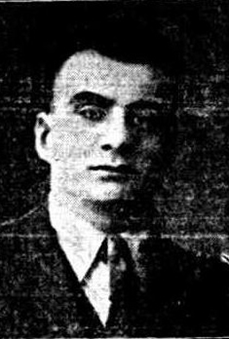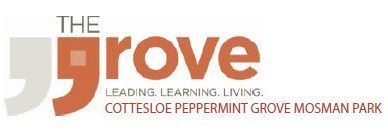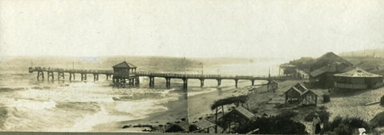1930’s
On the morning of Monday, 25th October 1937 a man’s body was found floating in the shallows of Cottesloe beach, near to Cottesloe Pier. The body was found partially clothed; the trousers were missing and two handkerchiefs were tied around the neck. One was tightly tied. The man was later identified as Michael Anastasas, aged 34. How the body came to be there was a mystery. Was it a case of murder, a fatal accident or suicide?
Michael Anastasas was Greek by birth and had arrived in Australia twenty years before. He lived at 121 Lake Street, Perth with his wife and four children. According to his wife they were happily married. He was employed as a Manager for National Fisheries Ltd. A van embossed with the company logo was found parked on Marine Parade, near to Forrest Street, across the road from Cottesloe Pier, the morning the body was discovered. Inside the vehicle were found two handwritten notes written in pencil. The first note said, “We loved each other and did not know what to do.” The second note said, “She said she was fond of me and that she loved me and wanted me to go and see her.” Some people surmised the notes were written in part by a woman and maybe there would be another body. Michael’s brother was convinced foul play was the reason for his brother’s death, saying Michael, “had no financial or domestic worries…He had been in good health and had no excuse to take his life.” He had last seen Michael on Friday afternoon at Michael’s place of work. However, putting together Michael’s last known movements from witness statements given at the inquest, another picture emerges.
Michael was last seen by John Kikeros, a fellow employee of National Fisheries, on Saturday 23rd October, when he assisted Kikeros with loading his truck with supplies for a trip down to Albany. Kikeros was about to drive Angelo Silverton, the Managing Director of National Fisheries, down to Albany for an important business meeting. They were expected to be away for a couple of days and Kikeros said that Michael had told him not to rush back, he need not return until Monday afternoon.
Koutsoukis, an old school friend and a driver employed by National Fisheries, said he last saw Michael at 6pm on Sunday 24th October at the Hellenic Club on Wellington Street, Perth. He said Michael was, “in good health and seemed quite normal. He drove me to my home at 7pm in the National Fisheries van which was later found at Cottesloe. When he left me, he said he was not going out again. He intended to stay at home for the night.”
Around 7.50pm Michael purchased some chocolates from John Aris on Murray Street, Perth. John had known Michael for thirty years and he last saw him around 8pm when Michael gave him a ride home. Michael returned home just after 8pm. He then told his wife he was going to the club about an employee and soon left. This was the last time he was seen by his wife. A neighbour of the couple later told police that he had spoken to Michael as he was getting into his vehicle and that Michael had mentioned to him that he was going for a drive.
Earlier, Kikeros and Silverton concluded business in Albany much quicker than expected. According to Kikeros, Silverton wanted to stay in Albany that night and return on Monday, but Kikeros persuaded him that they should return that day. They left Albany at 3pm. They reached William at 7.30pm and Silverton again said he was tired and that they should stay overnight, but Kikeros wanted to press on saying he was not tired. They arrived back at Silverton’s home around 10pm. Later, during the inquest, Kikeros was repeatedly questioned if it was at his suggestion or Silverton’s that they returned that night. He repeatedly said that he suggested it.
According to Silverton, when he arrived home, he saw a light on and faces at the window. When he entered the house one of the faces was that of his wife, the other was of Michael Anastasas. Silverton said an argument took place and he hit Michael before Michael managed to flee the house. He chased after Michael, but Michael managed to drive off. He remembered Michael to be fully clothed at the time.
Silverton continued to search for Michael. Mrs Anastasas said he visited her home three times during the evening and twice again on the morning of October 25th. In the morning, when he came to collect the money for the market store, he told Mrs Anastasas he hadn’t seen Michael and had been “looking for him all night.” He also explained to her that he had seen Michael the previous night with his wife, when he arrived back unexpectedly from Albany.

Copyright Trove; Mirror, Perth, Saturday 30 October 1938
http://nla.gov.au/nla.news-article75450138

Copyright Trove; Sunday Times, Perth, Sunday 31 October 1937 http://nla.gov.au/nla.news-article58793352
During the inquest, Silverton was repeatedly questioned about his possible involvement in Michael’s death. He was the last person to see Michael alive and had cause to do him harm. He had also deliberately misled police and reporters when first questioned. The coroner concluded that this was well-meant in a mistaken belief it would avoid unwelcome publicity into his private life. In her witness statement, Mrs Anastasas thought that Michael and Mr Silverton were friends. Mr Silverton had in fact carried on paying Michael’s wages in the weeks following his death.
At the inquest a police handwriting expert Detective-Sergeant A V Penrose said that, in his professional opinion, the two notes found in the van were written by the one person, and that person was Michael Anastasas.
A doctor who examined Michael’s body concluded that he died from drowning, rather than strangulation and that the two handkerchiefs could easily have been tied by Mr Anastasas himself before jumping off Cottesloe Pier. Mrs Anastasas confirmed that the handkerchiefs belonged to Michael.
Putting together witness statements, it seems likely that Michael drove to Cottesloe Pier sometime after being confronted by Silverton. The notes were written by him, probably that evening, as a pencil was found in the coat pocket he had been wearing. It seems likely that believing that his relationship with his wife, his friend and his job were all about to come to an end, he jumped off the pier with the intention of drowning himself. The loss of them all was too much for him to bear and he decided to end his own life. His body was found by Mr Melvin at 9.30 the next morning. The coroner at the inquest concluded that, “behind him were the remnants of a shattered friendship and the loss of a good job. He died by his own act.” A sad end to a man who seemed to be admired by colleagues and friends alike.
Cottesloe Pier no longer exists today. Finally completed in 1906, it gradually decayed over time, despite various efforts to repair it. In August 1952, what was left of it was blown up using Gelignite.


